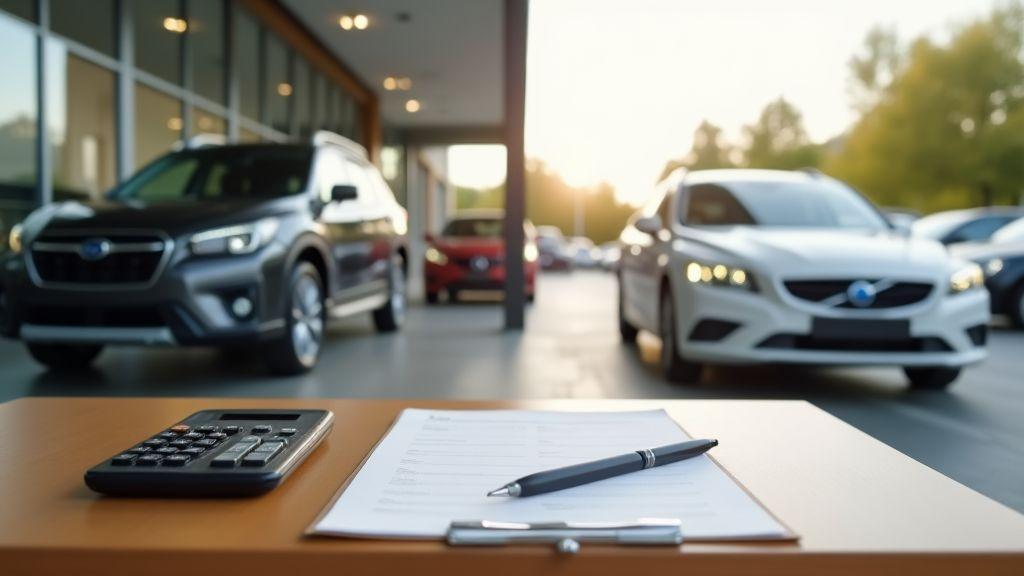Top Ten Banks Offering the Lowest Auto Loan Rates helps you compare offers fast and find the lowest APR and true loan cost. You’ll see what drives your rate—credit score, loan term, and vehicle age. Learn why new car loans often have the cheapest rates. Use preapproval to bargain with the dealer and follow a simple checklist to lower your rate before you apply. Compare fees, fixed versus variable APRs, and lender types so you pick the one that fits your goals.
Key Takeaway
- Compare banks to find the lowest auto rate for your credit
- Check and improve your credit before you apply
- Get preapproval so you can shop with confidence
- Pick a shorter loan term to cut total interest
- Review fees and terms, not just the advertised rate

How to compare offers from the top banks with the lowest auto loan rates
When you shop auto loans, focus on a few key numbers: APR, loan term, monthly payment, and any fees. APR shows the overall cost of the loan, not just the interest rate. For official guidance on comparing auto loan offers, see How to compare auto loan offers. Look past the flashy monthly payment the dealer shows and scan the full loan example — a small rate difference over a long term can cost hundreds or thousands.
Your credit score, down payment, and whether the car is new or used will shift offers a lot. Banks listed in “Top 10 Banks Offering the Lowest Auto Loan Rates” often show the lowest sticker APRs for top-credit borrowers. If your credit is lower, that list still helps by indicating which lenders tend to offer the best rates by tier. Check whether a bank charges origination or dealer markups and whether prepayment is free.
Get written loan estimates from lenders with APR, term, fees, and total payments so you can compare line by line. Also review each lender’s terms of use to understand fees and borrower obligations. Pre-approvals help you compare apples to apples and give you leverage in dealer negotiations.
Use APR to compare total loan cost across lenders
APR bundles interest and many fees into a single number so you can compare lenders at a glance. If one lender offers a 3% APR and another 4% APR for the same term, the 3% loan will almost always cost less over time. Use APR to rank lenders quickly, then verify the math with the loan estimates they give you. See Annual percentage rate and loan cost for a technical overview of how APR combines fees and interest.
Remember APR doesn’t capture everything—late fees, dealer-sold GAP insurance, or variable-rate details may not be reflected. Confirm whether the APR quoted is fixed or can change, and check if incentives require automatic enrollment in extra products.
| Example (for clarity) | APR | Term | Approx. total interest on $20,000 |
|---|---|---|---|
| Low example | 3.0% | 60 months | $1,591 |
| Mid example | 5.0% | 60 months | $2,645 |
| High example | 7.0% | 60 months | $3,758 |
Check bank auto loan APR comparison 2025 reports for current data
Look at 2025 APR comparison reports to see which banks are offering the best deals now. These reports break rates down by credit score bands, loan terms, and new vs. used cars. Use reports to shortlist lenders, then call or apply online for preapproval—reports are snapshots, not guarantees. If you see a lender on the “Top 10 Banks Offering the Lowest Auto Loan Rates” list, add them to your short list and verify current offers for your exact profile.
Quick steps you can take to compare rates fast
- Get your credit score and pick a price range.
- Check 2025 APR comparison reports and shortlist 3–5 banks.
- Request pre-approval from those banks with the same loan term.
- Compare the written APR, fees, and total payment.
- Choose the offer with the lowest total cost, not just the lowest monthly payment.

What drives your rate: credit score, loan term, and vehicle age
Your credit score is the loudest signal lenders listen to. A higher score says you pay bills on time and lowers the APR you’ll be offered. Learn more about what affects your score and how it influences rates at How credit score affects APR rates. The loan term changes the math: longer terms cut monthly payments but raise total interest. The vehicle age matters too—new cars hold value better, so banks offer lower rates; older cars lose value faster and often come with higher APRs or shorter maximum terms.
| Factor | How it moves your APR | What you might see |
|---|---|---|
| Credit score | Big impact | 3% difference between poor and excellent scores |
| Loan term | Moderate impact | Longer term = higher APR and more interest paid |
| Vehicle age | Moderate impact | New = lowest rates; used = higher rates, shorter max term |
How your credit score affects the best banks for low car loan APR
Your score narrows which lenders will give you their best deals. Big national banks and online lenders often publish low teaser APRs for excellent credit only. If your score is fair, credit unions and regional banks might beat big banks for your situation. Shop both types to find the best match.
Why new car loans often show the lowest interest rates
New cars are less risky: they keep value longer and often have warranties, so banks and captive finance arms offer low promotional rates to move inventory. New car loans also tend to be shorter, which cuts lender exposure and typically lowers APRs.
Easy checklist to lower your rate before you apply
- Check your credit report and fix errors; raise your score by paying down balances.
- Pay off small debts and lower your credit utilization.
- Avoid new credit inquiries for 60 days before applying.
- Save a larger down payment to reduce the loan-to-value ratio.
- Choose a shorter loan term you can afford.
- Get preapproval from a credit union or bank to compare offers.
- Consider a co-signer if your score is thin.

Which lender types offer the cheapest auto loan rates at banks and credit unions
Credit unions often give the lowest APRs because they are member-owned and return value to members instead of shareholders. See Why credit unions often have lower rates. Local or community banks can be very competitive, especially if you have an existing relationship. National banks and captive finance arms are convenient but may charge higher rates on average. Online banks can post low headline rates thanks to low overhead, but your final APR depends on credit, term, and fees.
| Lender type | Typical APR (new car) | Typical APR (used car) | Notes |
|---|---|---|---|
| Credit unions | 2.5%–5% | 3.0%–6% | Member discounts, lower fees |
| Local banks | 3.0%–6.5% | 4.0%–7% | Relationship perks, local decision-making |
| Online banks | 2.9%–6.5% | 3.5%–7.5% | Low overhead, fast process; final rate varies |
| National banks | 3.5%–8% | 4.5%–9% | Convenience, cross-sell products, higher fees possible |
Credit unions
1.9%–4.0%
Online banks
Big national bank
2.0%–4.5%
Representative range
0%
2%
4%
6%
8%
Why credit unions and local banks can give lower APRs
Credit unions return profits to members, allowing lower interest and fewer fees. Local banks can reward loyalty and make local underwriting decisions, which helps borrowers with good but imperfect credit.
Online banks vs national banks when you compare auto loan rates
Online banks often offer low base rates due to lower overhead but watch fine print (origination fees, required autopay discounts). National banks provide convenience and branch support and may have promotions for existing customers. When reading lists like “Top 10 Banks Offering the Lowest Auto Loan Rates”, check whether the rates apply to your score and term.
Choose the lender type that matches your goals
- Check local credit unions first for raw low rates.
- Get prequalified with online banks to compare soft‑pull offers.
- Ask your local bank for a loyalty discount.
- Compare APR, fees, and total interest before you sign.

Tips to get preapproved and secure the best auto loan interest rates (banks)
Getting preapproval is one of the smartest moves before you shop. It gives you leverage and a clear budget. Start by comparing offers from banks and credit unions, and check lists like the “Top 10 Banks Offering the Lowest Auto Loan Rates” to see who routinely posts low APRs. Work on your credit score first—small fixes can lower the rate you’re offered.
Shop like a pro: get several preapprovals and use them while you negotiate. Preapproval is not a contract; it’s a bargaining chip. Compare total loan cost, not just monthly payments.
Steps to get preapproved from banks offering lowest vehicle loan rates
First, check your credit report and score. Gather income docs, ID, proof of residence, and bank statements. Call or visit banks and credit unions on your shortlist — and if you want help comparing offers, contact our team. Ask about current APR ranges, loan terms, and discounts for autopay or relationship banking. Be clear about the vehicle type and whether it’s new or used.
| Credit Score Range | Typical APR Range (New Car) |
|---|---|
| 780 | 3% – 5% |
| 720–779 | 4% – 6% |
| 660–719 | 6% – 10% |
| 620–659 | 8% – 14% |
| Under 620 | 10% – 20% |
How you can use preapproval to negotiate dealer financing
Walk into the dealership with your preapproval and ask the salesperson to beat it. Dealers may try markups, but they also have incentives. If they can’t beat your bank’s offer, use your preapproval to buy with confidence and negotiate other perks like maintenance or trade-in value. Ask for the math and compare total cost, not only monthly payment.
Documents you should have ready to speed your approval
- Valid photo ID (driver’s license or passport)
- Recent pay stubs and W-2s or tax returns
- Bank statements (last 2–3 months)
- Proof of residence (utility bill or lease)
- Social Security number and vehicle info (VIN if available)
Before you provide sensitive documents, review the lender’s privacy policy so you understand how personal data will be handled.

New car vs used car loans: how banks set the lowest car loan rates by bank
Banks set auto loan rates by weighing credit risk, collateral value, and loan term. If you have a strong credit score, you’ll see lower offers from the “Top 10 Banks Offering the Lowest Auto Loan Rates.” New cars are safer collateral, so you’ll often get a lower APR for a new vehicle.
Loan term, down payment, income, and debt-to-income ratio all affect the final APR. Big national banks often offer the lowest headline rates for new cars; credit unions and community banks can beat them for members, and online lenders may offer attractive short-term rates. Shop multiple lenders.
Typical APR ranges for new cars from banks with the best auto loan interest rates
For borrowers with excellent credit (740), many top banks quote 2.0%–4.5% for new cars on short terms (36–48 months). Mid-credit borrowers commonly see 4.5%–8.0%. Lock the rate when you find a good offer.
| Bank type / Example | Typical APR for New Cars (Good–Excellent) | Typical APR for Used Cars (Good–Excellent) |
|---|---|---|
| Big national bank | 2.0%–4.5% | 4.0%–7.5% |
| Credit union | 1.9%–4.0% | 3.5%–6.5% |
| Online bank | 2.2%–5.0% | 4.2%–8.0% |
Why used car loans often carry higher APRs
Used cars carry more uncertainty: older cars can hide mechanical problems and their resale value is harder to predict. Part-time warranties or certified pre-owned status can reduce the premium, but lenders generally treat used loans as riskier.

Read fees, APRs, and the bank auto loan APR comparison 2025 before you sign
Read every line of the offer: APR shows the yearly cost, including interest and many fees. A low interest rate can look great, but a high origination fee or prepayment penalty can wipe out savings. For consumer resources on fees and protections, see What fees and protections to watch. Ask for a written breakdown of every charge and a payment schedule. Use a repayment calculator or spreadsheet to compare total dollars paid.
Common fees that raise your cost when you compare auto loan rates
Lenders and dealers attach fees that add up: origination fees, documentation fees, title and registration, dealer interest-rate markups, GAP insurance, and paid add-ons. Ask how negotiable each fee is and confirm borrower qualification needed to get advertised low rates.
- Origination fee — one-time charge to open the loan
- Documentation fee — dealer or lender paperwork charge
- Dealer interest rate markup — increases your APR above bank buy rate
- GAP insurance and add-ons — optional products sold at signing
- Prepayment penalty — fee for paying off the loan early
Fixed vs variable APR and how it affects your monthly payment
A fixed APR stays the same and gives predictable payments. A variable APR can move with an index like the prime rate and can lower or raise payments over time—look for caps and adjustment frequency.
Key terms to know
Know these words: APR, interest rate, principal, term, monthly payment, origination fee, prepayment penalty, dealer markup, GAP.
Conclusion
You’re in control. Focus first on APR, your credit score, and the loan term—those three move the needle most. Get preapproval, compare written estimates line by line, and watch for hidden fees and dealer markups.
Think of offers like apples: a shiny monthly payment can hide a sour total cost. Use the checklist—fix credit errors, increase your down payment, choose a shorter term you can afford, gather documents, and shop credit unions and local banks alongside national and online lenders.
Negotiate with confidence. A strong preapproval is your bargaining chip. Ask lenders to show the math, insist on a written breakdown, and don’t sign until the numbers add up. Small rate differences matter over time; a few tenths of a percent can be the difference between a bargain and buyer’s remorse.
Want to dive deeper or check current bank rate lists, including the latest “Top 10 Banks Offering the Lowest Auto Loan Rates”? Read more practical guides and up‑to‑date comparisons at Meridian Pioneer resource center.

